Cleaning Procedure
- Clean the crankshaft with solvent.
- Thoroughly clean all oil passages and inspect for restrictions or burrs.
- Dry the crankshaft with compressed air.
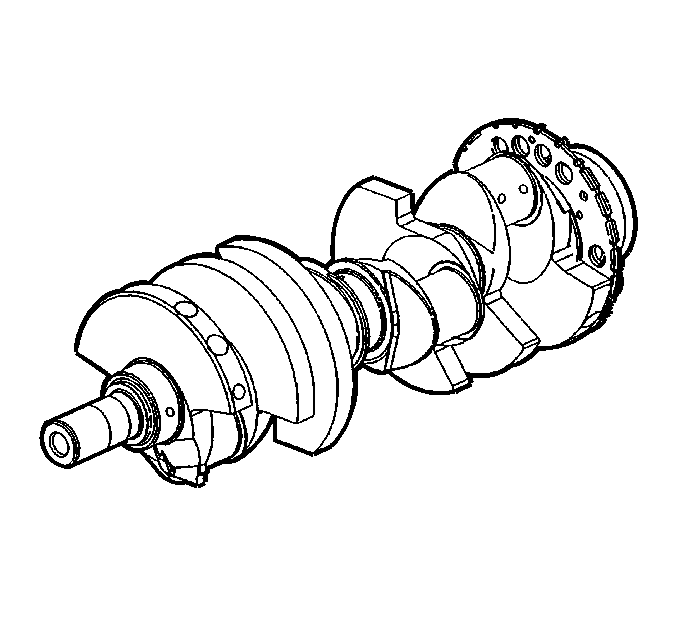
Important: Use care when handling the crankshaft. Avoid damage to the bearing surfaces or the lobes of the crankshaft position reluctor ring. Damage to the teeth of the crankshaft position reluctor ring may affect on-board diagnostics (OBD) II system performance.
Caution: Wear safety glasses in order to avoid eye damage.
Inspection Procedure
Tools Required
| • | J 7872 Magnetic Base Dial Indicator Set |
| • | J 36660-A Torque Angle Meter |
- Perform a visual inspection of the crankshaft for damage.
- Inspect the crankshaft position reluctor ring lobes for damage.
- Inspect the crankshaft journals for wear (1).
- Inspect the crankshaft journals for grooves or scoring (2).
- Inspect the crankshaft journals for scratches or wear (3).
- Inspect the crankshaft journals for pitting or imbedded bearing material (4).
- Inspect the crankshaft key (1), keyway (2), and threaded hole (3) for damage.
- Measure the crankpins for the out-of-round.
- Measure the crankpins for taper.
- Measure the crankshaft thrust wall width.
- Measure the crankshaft runout.
- Use the J 7872 in order to measure the crankshaft runout at the front and rear intermediate journals.
- Use the J 7872 in order to measure the runout of the crankshaft rear flange.
- Use the J 7872 in order to measure the runout of the crankshaft position reluctor ring. Reluctor ring runout should be measured 1.0 mm (0.04 in) below the ring teeth.
- Inspect the rear crankshaft oil gallery plug for a loose fit or leaking.
- Inspect crankshaft bearings for craters or pockets. Flattened sections on the bearing halves also indicate fatigue.
- Inspect the crankshaft bearings for excessive scoring or discoloration.
- Inspect the crankshaft bearings for dirt or debris imbedded into the bearing material.
- Inspect the crankshaft bearings for improper seating indicated by bright, polished sections of the bearing.

Important:
• The reluctor ring teeth should not have imperfections on the rising or falling edges. • Imperfections of the reluctor ring teeth may affect OBD II system performance.

Journals should be smooth with no signs of scoring, wear, or damage.
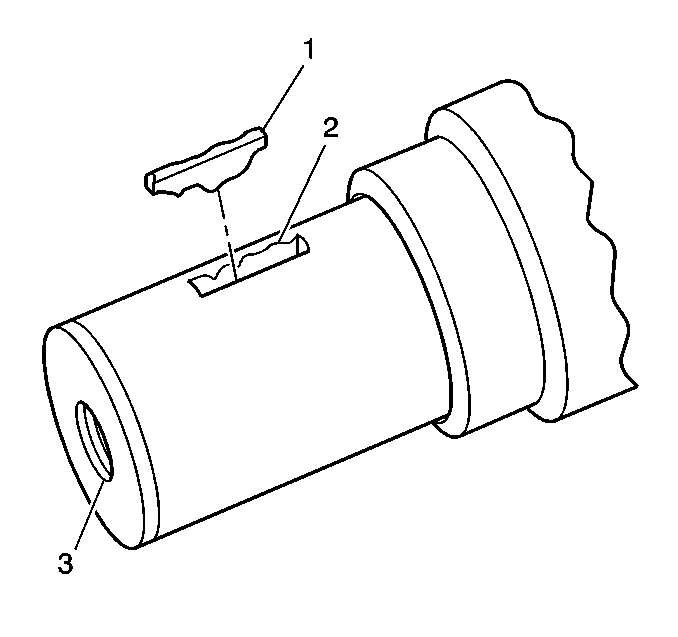


A crankshaft with a thrust wall width in excess of 26.2 mm (1.0315 in) must be replaced.
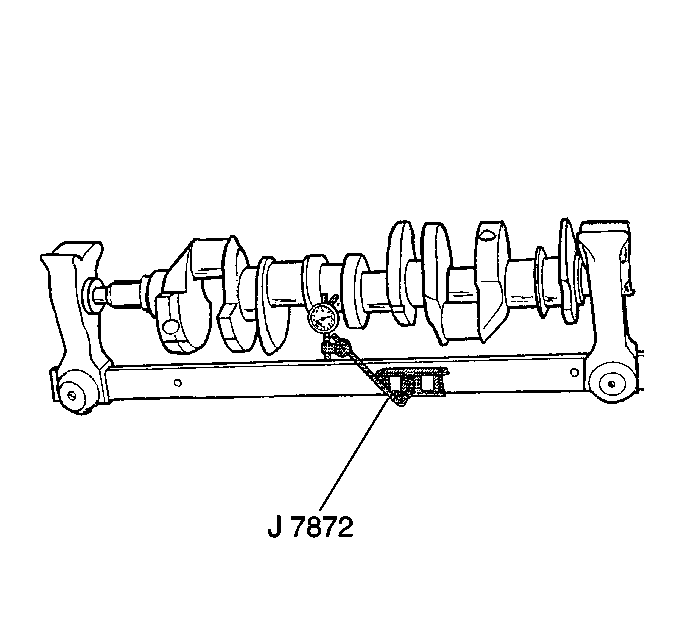
Use wooden V blocks or a fixture to support the crankshaft on the front and rear journals.
If the reluctor ring has runout in excess of 0.7 mm (0.028 in), replace the crankshaft.
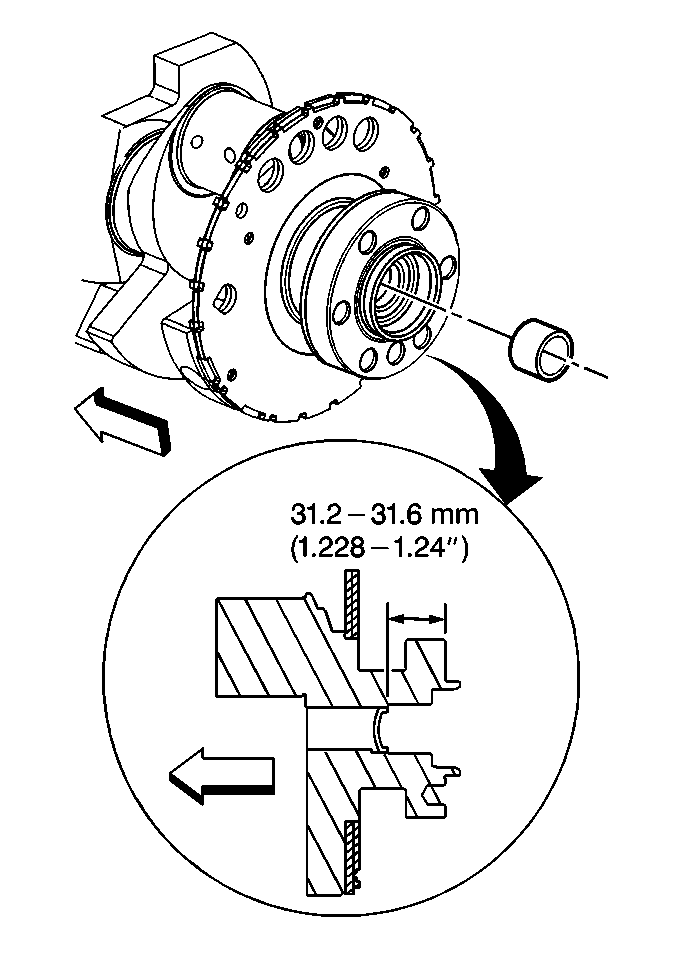
Important: A loose or damaged crankshaft oil gallery plug must be replaced.
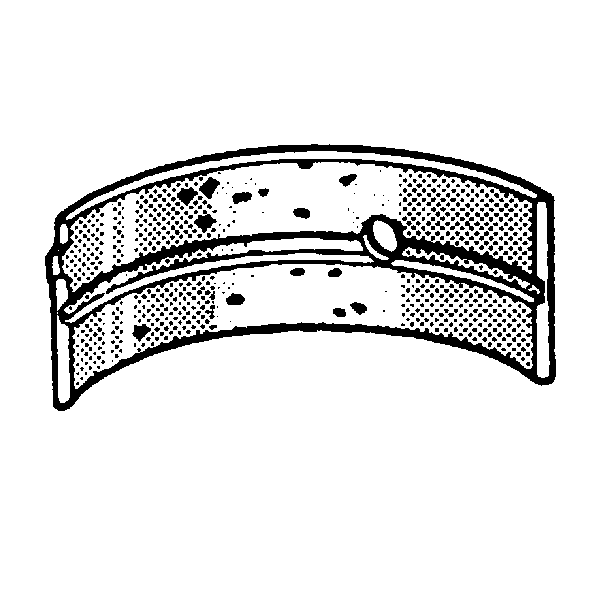
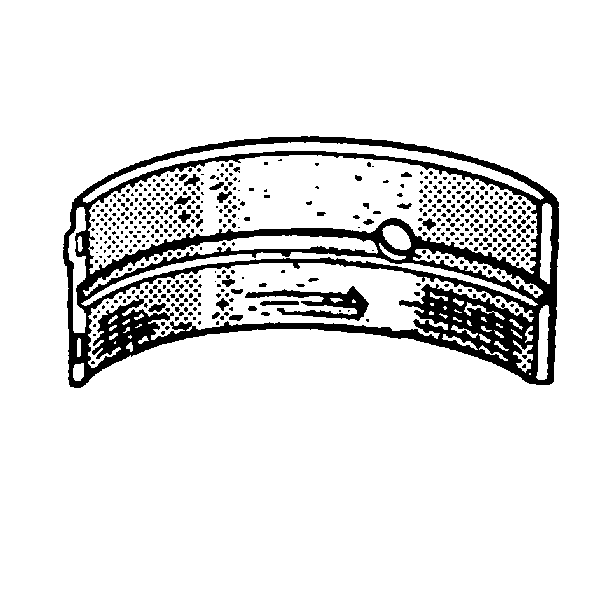
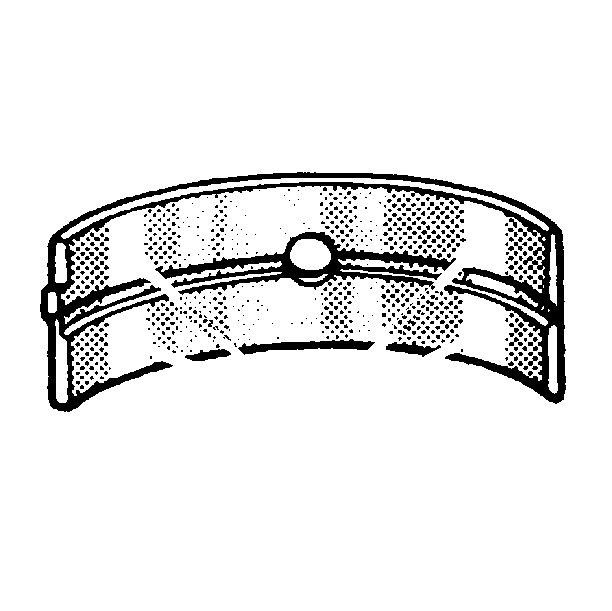
If the lower half of the bearing is worn or damaged, both upper and lower halves should be replaced.
Generally, if the lower half is suitable for use, the upper half should also be suitable for use.
Measuring Main Bearing Clearance
Tools Required
| • | J 6125-1B Slide Hammer |
| • | J 36660-A Torque Angle Meter |
| • | J 41818 Crankshaft Bearing Cap Remover |
- Remove the bearing cap M8 side bolts.
- Remove the bearing cap M10 bolts and studs.
- Install the J 41818 to the bearing cap.
- Install the J 6125-1B to the J 41818 in order to remove the bearing cap.
- Remove the bearing cap and lower bearing.
- Install gaging plastic onto the crankshaft journal. Install the gaging plastic the full width of crankshaft bearing journal.
- Install the bearing, bearing cap, bolts, and studs.
- Tighten the inner bolts (1-10) a first pass in sequence to 20 N·m (15 lb ft).
- Tighten the inner bolts (1-10) a final pass in sequence to 85 degrees using the J 36660-A .
- Tighten the outer studs (11-20) a first pass in sequence to 20 N·m (15 lb ft).
- Tighten the outer studs (11-20) a final pass in sequence to 53 degrees using the J 36660-A .
- Tighten the side cap bolts to 25 N·m (18 lb ft).
- Remove the bearing cap M8 side bolts.
- Remove the bearing cap bolts and studs.
- Use the J 41818 and the J 6125-1B in order to remove the bearing cap.
- Measure the gaging plastic at its widest area using the scale supplied with the plastic gaging kit.
- Measure the crankshaft end play.
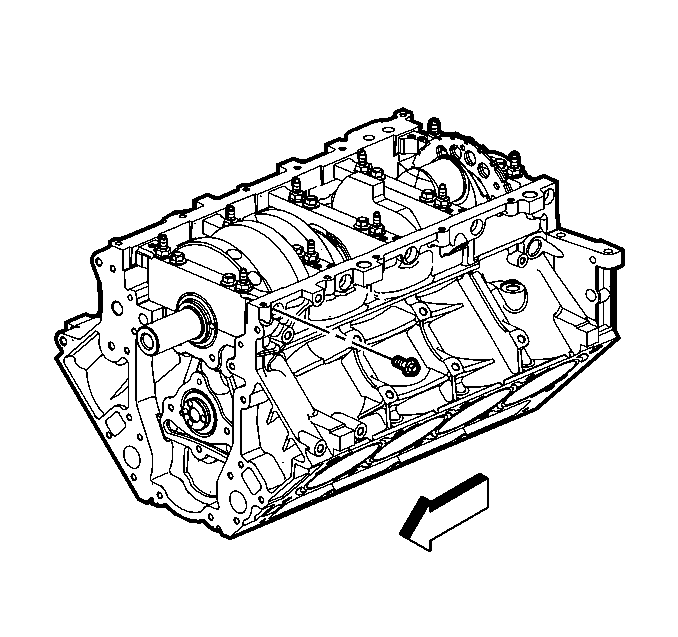
Important:
• The crankshaft main bearings are a precision insert type. Main bearing caps are machined with the engine block for proper clearance and cannot be shimmed or filed for bearing fit. If the clearances are found to be excessive, new
bearings and/or engine block and cap repair or replacement may be required. • Do not rotate the crankshaft while gaging plastic is between the crankshaft journal and the bearing surface. • The crankshaft bearing clearances are critical. Excessive bearing clearance may affect crankshaft position sensor signals and may affect on-board diagnostics (OBD) II system operation. • Remove the bearing cap side bolts prior to cap removal.
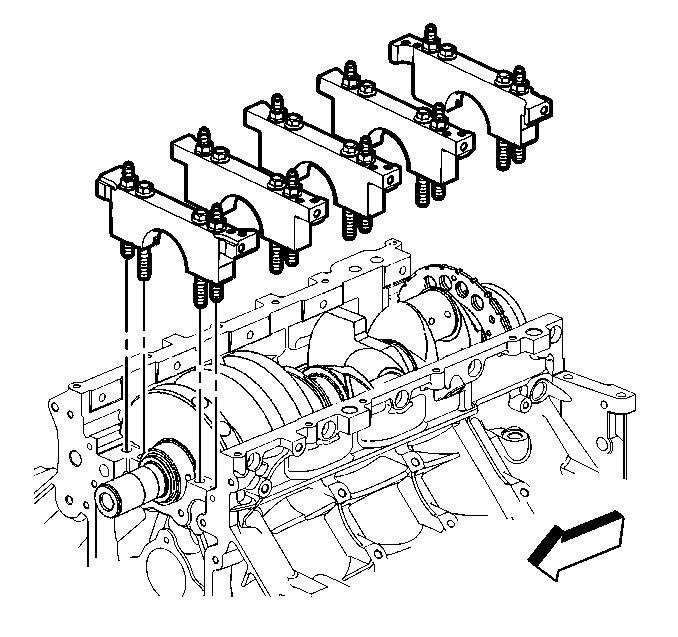
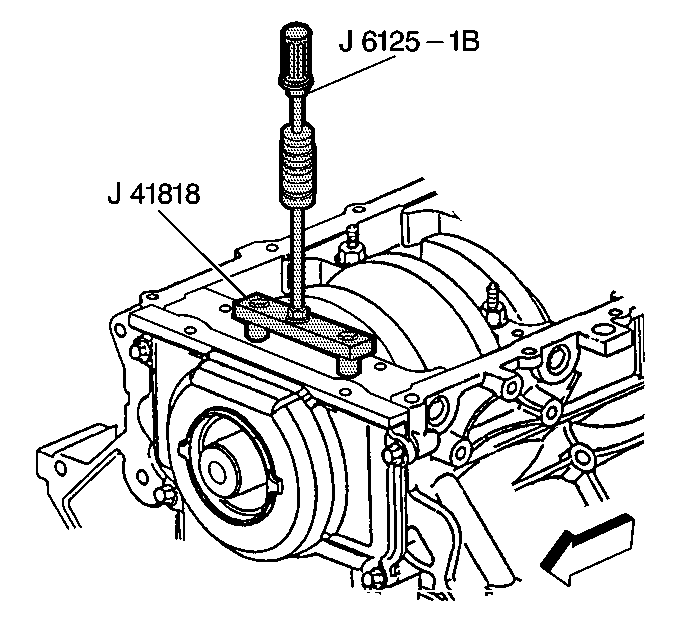
Notice: Use the correct fastener in the correct location. Replacement fasteners must be the correct part number for that application. Fasteners requiring replacement or fasteners requiring the use of thread locking compound or sealant are identified in the service procedure. Do not use paints, lubricants, or corrosion inhibitors on fasteners or fastener joint surfaces unless specified. These coatings affect fastener torque and joint clamping force and may damage the fastener. Use the correct tightening sequence and specifications when installing fasteners in order to avoid damage to parts and systems.
Tighten
Tighten the
J 41818
bolts to 11 N·m (100 lb in).
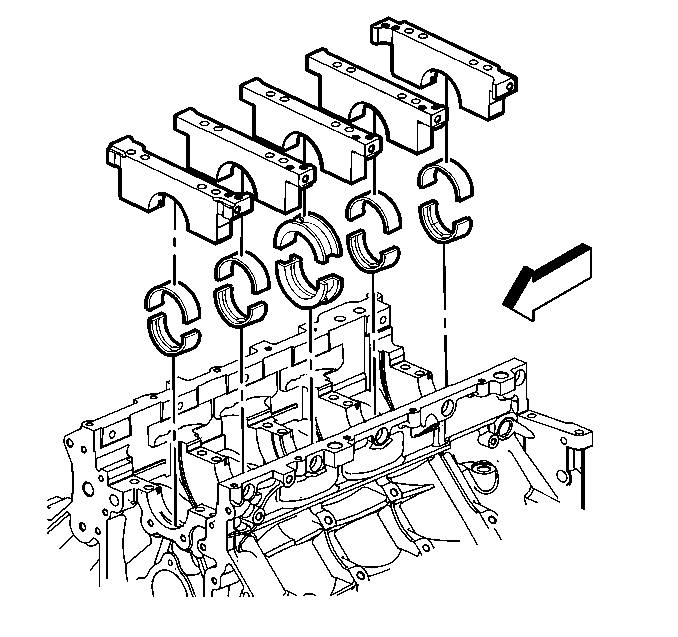
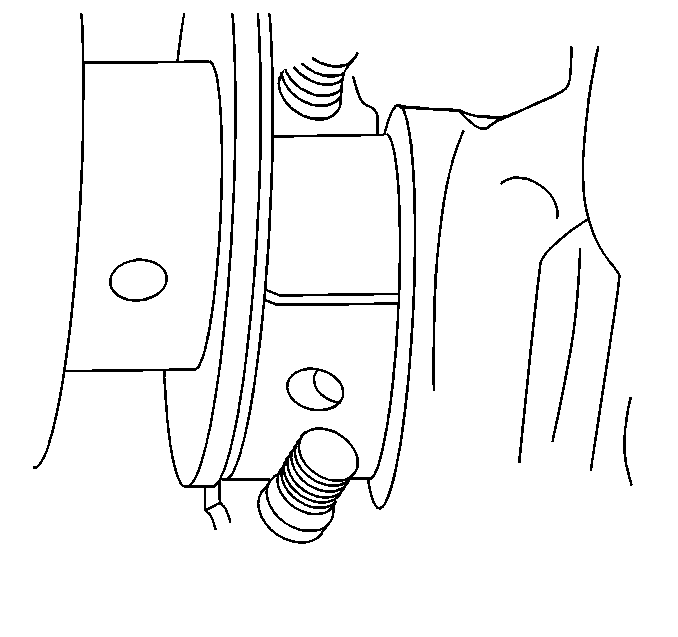
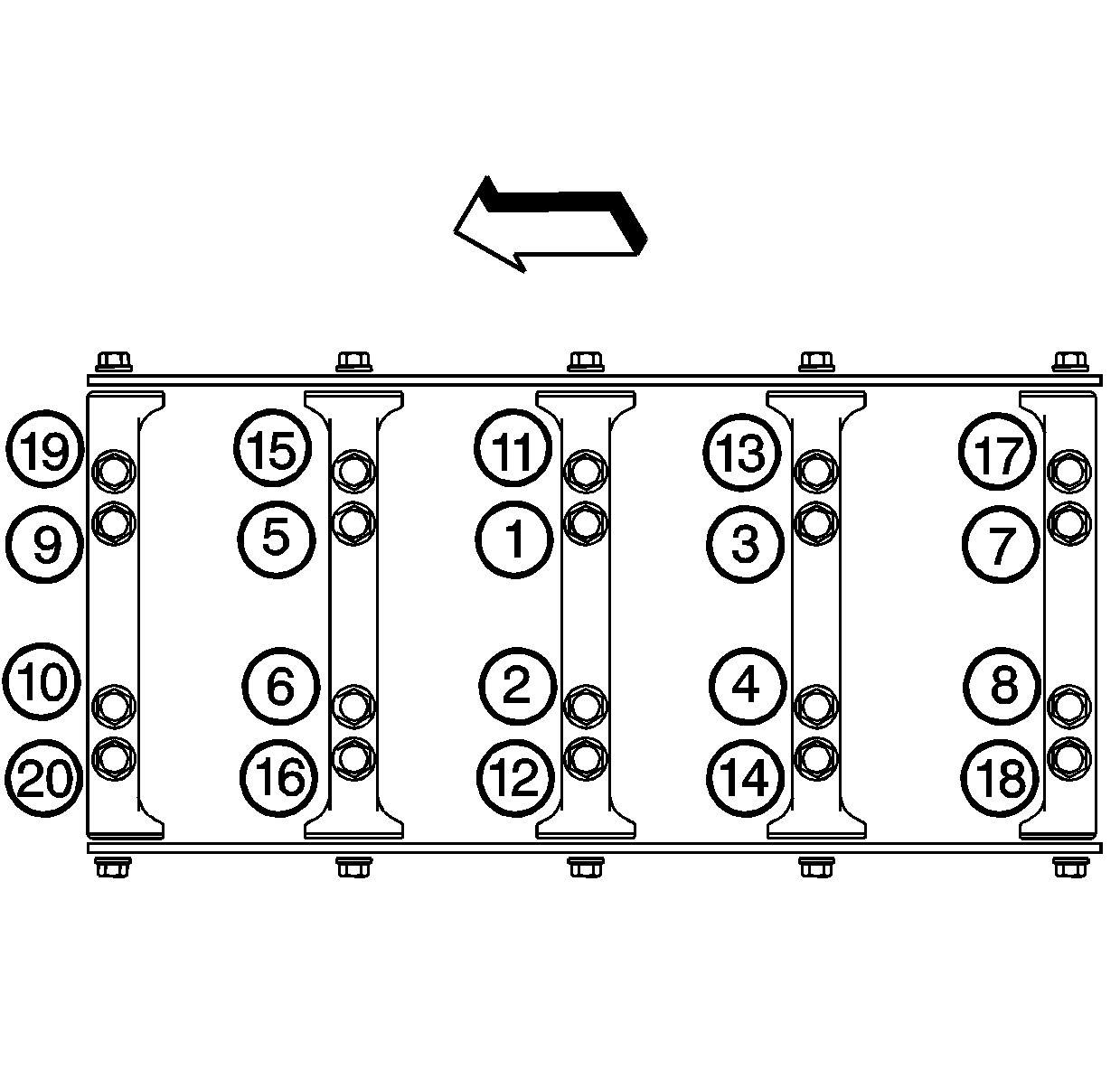
Tighten
Tighten the bolt on one side of the bearing cap and then tighten the bolt on the opposite side of the same bearing cap.
Important: Remove the bearing cap side bolts prior to cap removal.



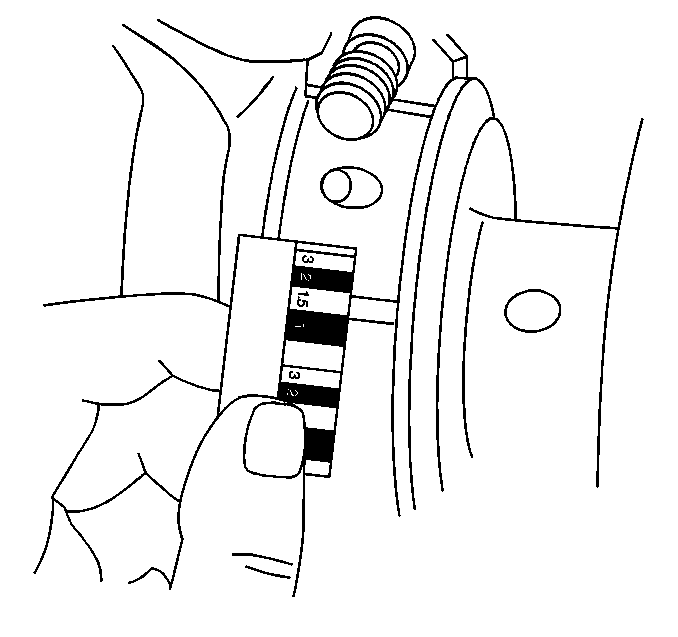
| • | If the gaging plastic shows irregularity in the journal exceeding 0.025 mm (0.001 in), remove the crankshaft and measure the journal with a micrometer. |
| • | If the bearing clearance is greater than 0.065 mm (0.0025 in), select and install an undersized bearing set, and measure the clearance with gaging plastic. |
| • | If clearance cannot be brought to specifications, replace the crankshaft or grind the crankshaft for use with the next undersized bearing. |
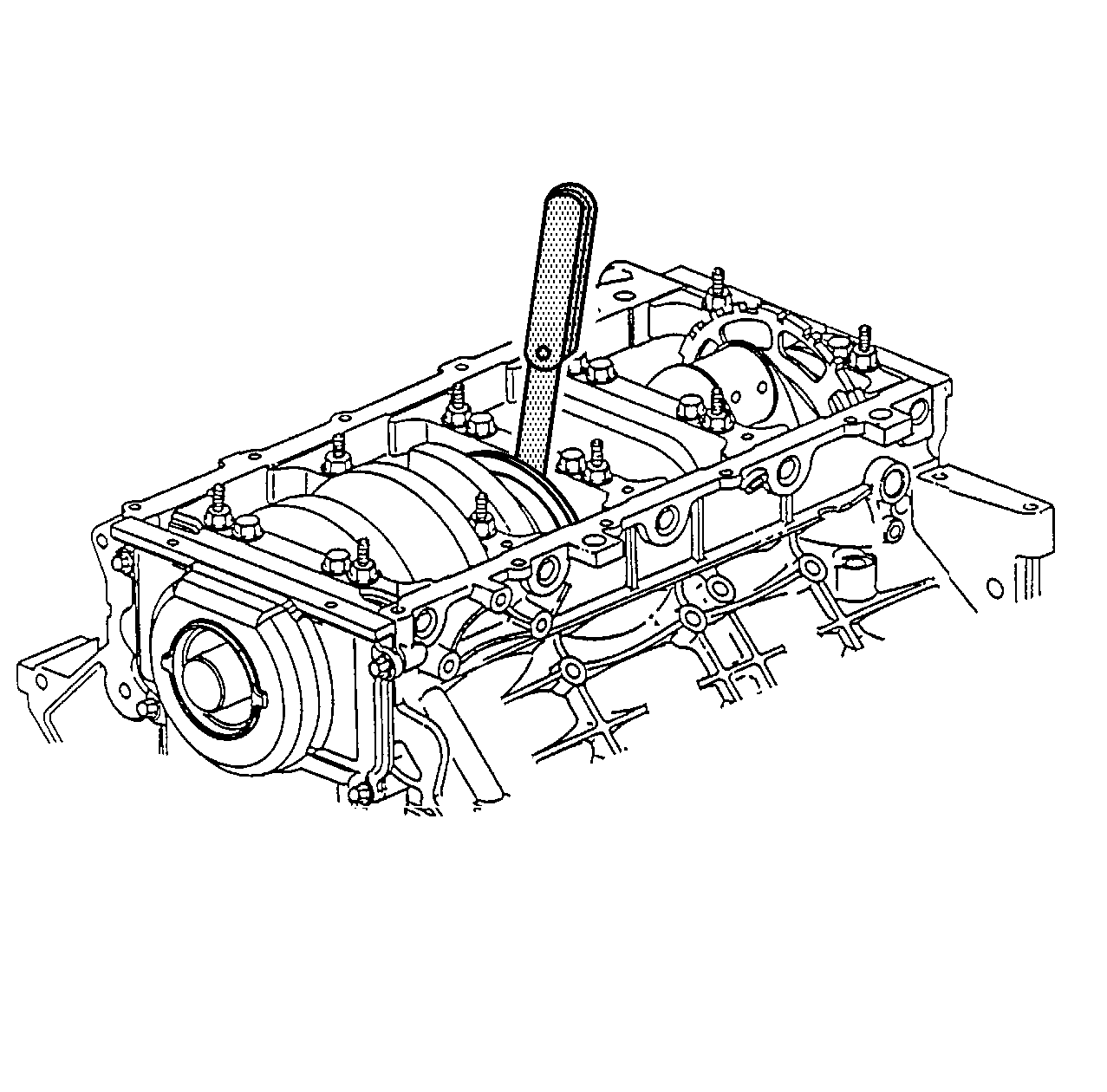
| 12.1. | Thrust the crankshaft forward or rearward. |
| 12.2. | Insert a feeler gage between the center crankshaft bearing and the bearing surface of the crankshaft and measure the bearing clearance. |
The proper crankshaft end play clearance is 0.04-0.2 mm (0.0015-0.0078 in).
| 12.3. | If the bearing clearance is not within specifications: |
| • | Inspect the thrust surfaces for nicks, gouges or raised metal. Minor imperfections may be removed with a fine stone. |
| • | Replace the thrust bearings and measure the end play. |
| • | If the correct measurements cannot be obtained, repair the crankshaft thrust surfaces or replace the crankshaft. |
Measuring Connecting Rod Bearing Clearance
Tools Required
J 36660-A Torque Angle Meter
- Remove the bearing cap, bearing half and bolts.
- Install the gaging plastic onto the connecting rod bearing journal. Install the gaging plastic the full width of the journal.
- Install the bearing cap, bearing, and bolts.
- Tighten the connecting rod bolts first pass to 20 N·m (15 lb ft).
- Tighten the connecting rod bolts final pass to 85 degrees using the J 36660-A .
- Remove the bearing cap, bearing, and bolts.
- Measure the gaging plastic at its widest area using the scale supplied with the plastic gaging kit.
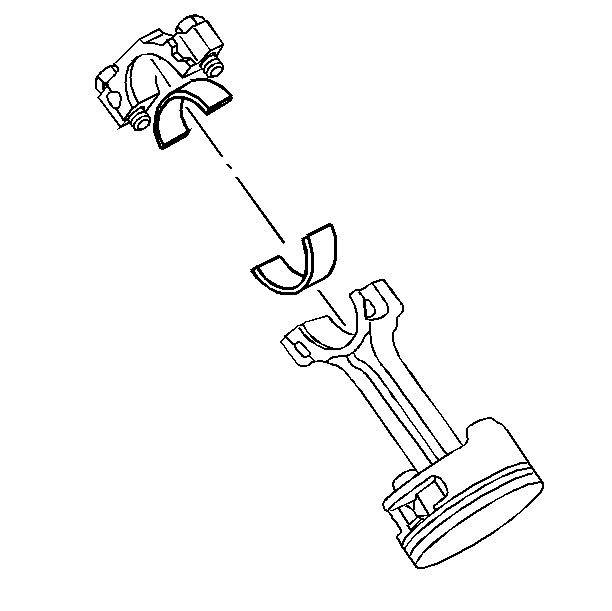
Important:
• Connecting rod bearings are a precision insert type. Connecting rods are of a powdered metal design and cannot be shimmed or filed for bearing fit. If clearances are found to be excessive, a new bearing and/or connecting rod are
required. • Do not rotate the crankshaft while gaging plastic is between the crankshaft journal and the bearing surface.


Notice: Use the correct fastener in the correct location. Replacement fasteners must be the correct part number for that application. Fasteners requiring replacement or fasteners requiring the use of thread locking compound or sealant are identified in the service procedure. Do not use paints, lubricants, or corrosion inhibitors on fasteners or fastener joint surfaces unless specified. These coatings affect fastener torque and joint clamping force and may damage the fastener. Use the correct tightening sequence and specifications when installing fasteners in order to avoid damage to parts and systems.
Tighten

The connecting rod bearing clearance should be 0.023-0.076 mm (0.0009-0.003 in).
